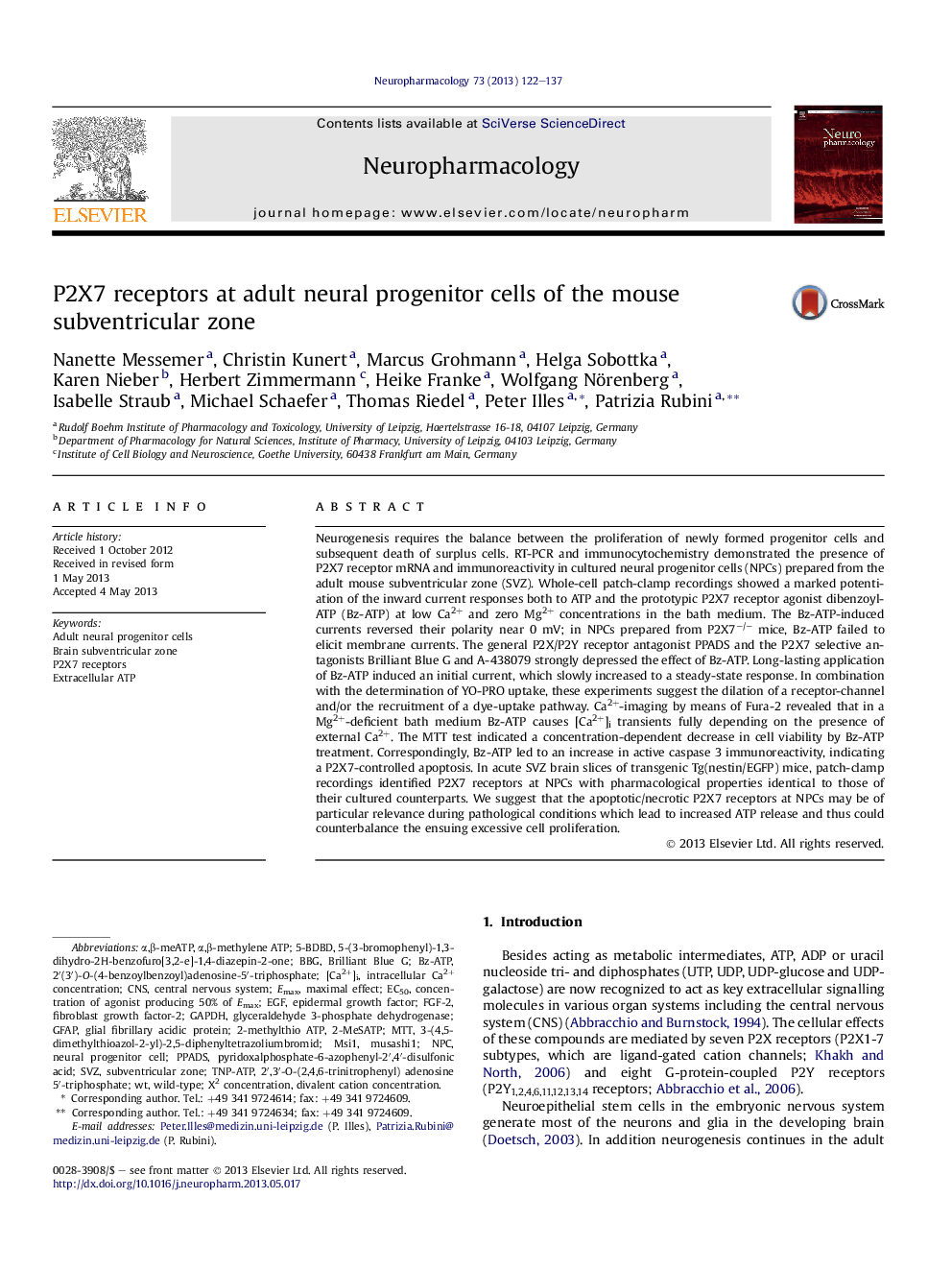| Article ID | Journal | Published Year | Pages | File Type |
|---|---|---|---|---|
| 5814930 | Neuropharmacology | 2013 | 16 Pages |
Abstract
Neurogenesis requires the balance between the proliferation of newly formed progenitor cells and subsequent death of surplus cells. RT-PCR and immunocytochemistry demonstrated the presence of P2X7 receptor mRNA and immunoreactivity in cultured neural progenitor cells (NPCs) prepared from the adult mouse subventricular zone (SVZ). Whole-cell patch-clamp recordings showed a marked potentiation of the inward current responses both to ATP and the prototypic P2X7 receptor agonist dibenzoyl-ATP (Bz-ATP) at low Ca2+ and zero Mg2+ concentrations in the bath medium. The Bz-ATP-induced currents reversed their polarity near 0Â mV; in NPCs prepared from P2X7â/â mice, Bz-ATP failed to elicit membrane currents. The general P2X/P2Y receptor antagonist PPADS and the P2X7 selective antagonists Brilliant Blue G and A-438079 strongly depressed the effect of Bz-ATP. Long-lasting application of Bz-ATP induced an initial current, which slowly increased to a steady-state response. In combination with the determination of YO-PRO uptake, these experiments suggest the dilation of a receptor-channel and/or the recruitment of a dye-uptake pathway. Ca2+-imaging by means of Fura-2 revealed that in a Mg2+-deficient bath medium Bz-ATP causes [Ca2+]i transients fully depending on the presence of external Ca2+. The MTT test indicated a concentration-dependent decrease in cell viability by Bz-ATP treatment. Correspondingly, Bz-ATP led to an increase in active caspase 3 immunoreactivity, indicating a P2X7-controlled apoptosis. In acute SVZ brain slices of transgenic Tg(nestin/EGFP) mice, patch-clamp recordings identified P2X7 receptors at NPCs with pharmacological properties identical to those of their cultured counterparts. We suggest that the apoptotic/necrotic P2X7 receptors at NPCs may be of particular relevance during pathological conditions which lead to increased ATP release and thus could counterbalance the ensuing excessive cell proliferation.
Keywords
EGFEmaxPPADS2-MeSATPNPCBrilliant Blue GSVZBBGFGF-2Msi1Bz-ATPTNP-ATPpyridoxalphosphate-6-azophenyl-2′,4′-disulfonic acidEC502-methylthio ATPGAPDHGFAPExtracellular ATPMTT[Ca2+]iα,β-MeATPα,β-methylene ATPmaximal effectCNSAdult neural progenitor cellsneural progenitor cellcentral nervous systemepidermal growth factorintracellular Ca2+ concentrationfibroblast growth factor-2Musashi1subventricular zonewild-typeGlial fibrillary acidic proteinglyceraldehyde 3-phosphate dehydrogenaseP2X7 receptors
Related Topics
Life Sciences
Neuroscience
Behavioral Neuroscience
Authors
Nanette Messemer, Christin Kunert, Marcus Grohmann, Helga Sobottka, Karen Nieber, Herbert Zimmermann, Heike Franke, Wolfgang Nörenberg, Isabelle Straub, Michael Schaefer, Thomas Riedel, Peter Illes, Patrizia Rubini,
